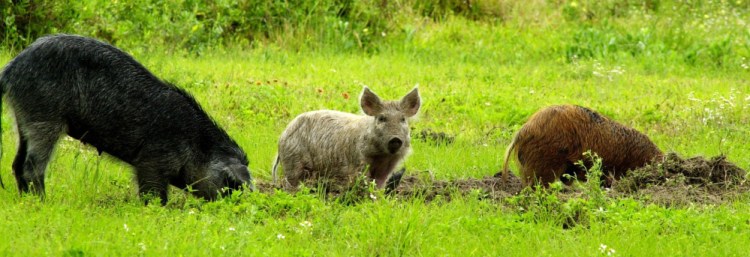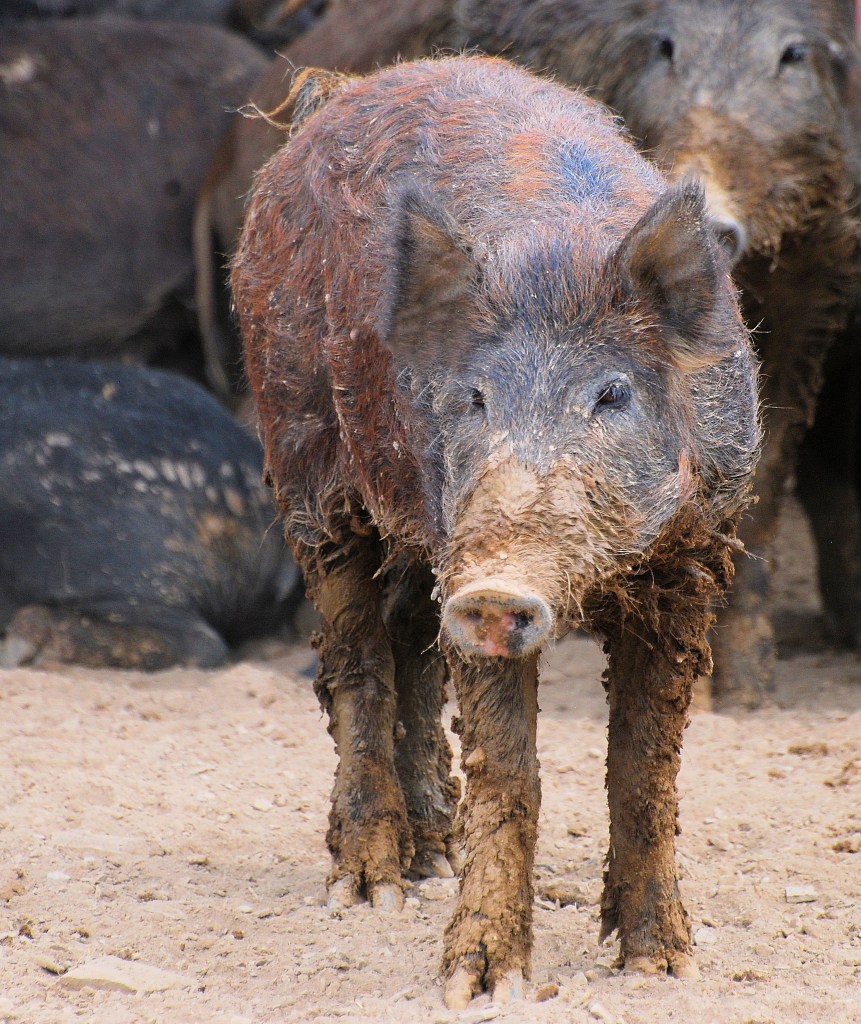Wild pigs do not generally come up in conversation in Maine, but they were in the news last week after a fatality involving a Maine hunter occurred in Texas during a feral pig hunt.
While wild boars are not native to Texas, or any region of North America, for that matter, they can be found in 39 states.
Outside of a few hunting preserves, feral pigs – also called razorbacks and Russian boars – are not found in Maine, state wildlife biologist Kendall Marden said.
Let’s hope they never find their way here.
Across the country, wild boars have long been considered a nuisance animal, particularity in regard to farm crops. But the reasons to fear the species are many.
According to New Hampshire Fish and Game, wild pigs have the greatest reproductive potential of any large mammal in the world. They are voracious omnivores that compete with native wildlife for food, cause environmental damage and are known to carry as many as 30 diseases and 37 parasites. They prey on lambs, goats, poultry, newborn cattle and baby deer.
They are a threat to humans, livestock, pets and wildlife.
The damages in New Hampshire to crops and fields have not been on a grand scale, but a wild breeding population exists, which is cause for grave concern, said wildlife biologist Tony Musante with the U.S. Department of Agriculture in Concord.
Musante said feral pigs have been found in the western part of the state, mostly in Sullivan County south of Hanover, and are believed to be escaped from hunting preserves.
“We do have trail cameras up and have trapped animals. We’ve caught pregnant sows. I don’t think there is a large (wild) population. I would say there is a breeding population,” Musante said.
Admittedly, I am a native-species snob.
I’d rather fish for small native brook trout than monster northern pike. I’d rather hunt a modest Maine whitetail then go elsewhere to stalk big elk. Muskie don’t interest me unless it is a relation of the former Maine senator, Ed Muskie, champion of the Clean Water Act.
Wild boars seem something akin to a Norway rat or giant cockroach.
“They are hunted year-round, 24-7. The Texas Department of Agriculture considers them a nuisance animal. They are a pest,” said Steve Lightfoot, the news manager for the Texas Parks and Wildlife Department.
What specifically concerns me is that wild pigs have been documented in New Hampshire since 1895. We’re lucky there is no breeding population here.
New Hampshire Fish and Game reports: “The destructive behavior of feral swine causes an estimated $1.5 billion in agricultural and environmental damage annually.”
Jane Vachon, a New Hampshire Fish and Game spokesperson, put it more bluntly: “They say if they’ve been through an area, it looks like a rototiller went crazy there. They devastate native habitat, forests and water supplies.”
The Maine Department of Inland Fisheries and Wildlife keeps an eye on whether any wild boars escape from Maine game preserves. Marden said the number of native Maine species that would be at risk if wild pigs found their way here would be significant.
“It doesn’t look like it could become a problem but we want to be on top of things,” Marden said. “We have a planned response.”
Wildlife biologist Russ Gatcomb of the United States Department of Agriculture in Maine said wild pigs are generally elusive in the forest. But an unexpected run-in with one could end badly for anyone.
“During an attack, feral swine will lunge or charge utilizing their tusks. This predominantly causes lacerations to your legs or feet due to height,” Gatcomb said.
Send questions/comments to the editors.





Success. Please wait for the page to reload. If the page does not reload within 5 seconds, please refresh the page.
Enter your email and password to access comments.
Hi, to comment on stories you must . This profile is in addition to your subscription and website login.
Already have a commenting profile? .
Invalid username/password.
Please check your email to confirm and complete your registration.
Only subscribers are eligible to post comments. Please subscribe or login first for digital access. Here’s why.
Use the form below to reset your password. When you've submitted your account email, we will send an email with a reset code.